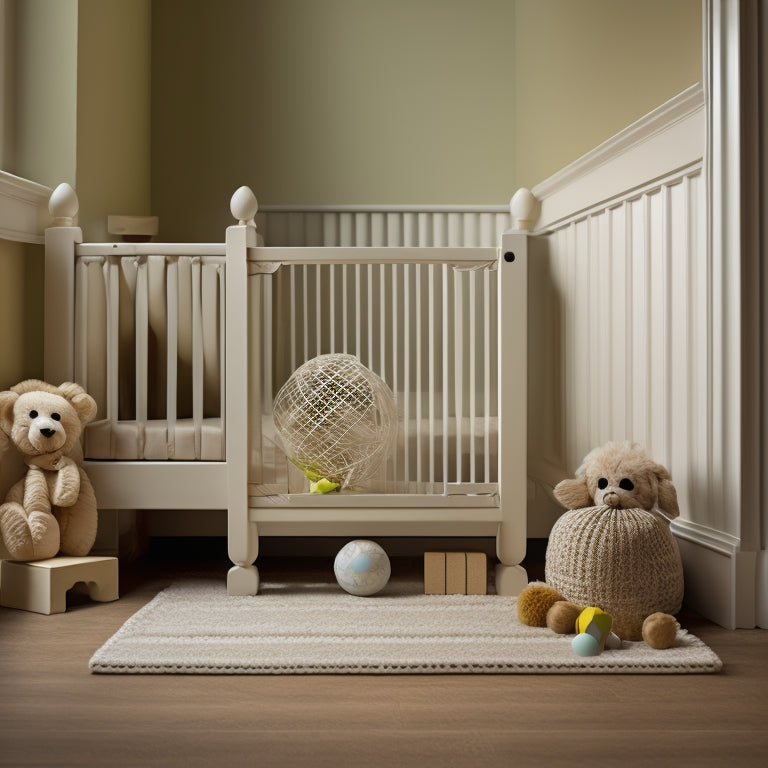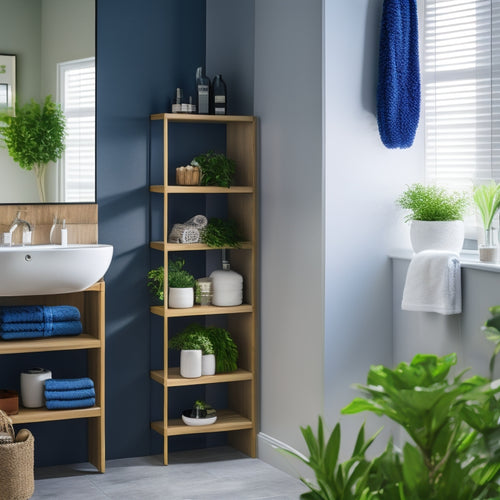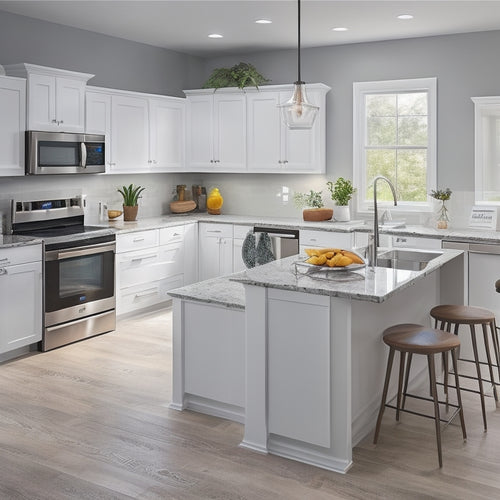
Craft Your Own Baby Gate: DIY Delight
Share
Crafting your own baby gate can be a delightful DIY project that guarantees your little one's safety while adding a personal touch to your home. To get started, gather essential materials such as common boards, bead board, wood glue, and a Kreg Jig drilling system, considering your budget and material quality. Measure and assemble the door frame carefully, using the Kreg Jig system for accurate pocket holes and secure corners. With safety precautions in place, you'll be on your way to creating a sturdy and stylish gate that complements your home's décor. Now, take the first step towards a customized baby gate that reflects your personal style.
Key Takeaways
• Gather necessary materials like common boards, bead board, wood glue, and a Kreg Jig drilling system to ensure durability and desired appearance.
• Use a Kreg Jig system to accurately assemble the door frame, attaching pieces with screws and wood glue for a secure and square frame.
• Add X braces for additional support and attach bead board backing for a sturdy and visually appealing gate.
• Prioritize safety during the DIY project by wearing protective gear, working in a well-ventilated area, and avoiding accidents and injuries.
• Share your completed DIY baby gate project on social media, DIY forums, or blogging communities to inspire others and boost your confidence.
Gathering Essential Materials
When initiating a DIY baby gate project, the first important step is to gather all the necessary materials, including common boards of various sizes, bead board for backing, wood glue, and a Kreg Jig drilling system with clamps, to guarantee a sturdy and reliable gate. Material selection is critical, as it directly impacts the gate's durability and appearance.
Budgeting is also a crucial consideration, as it helps determine the quality and quantity of materials to be purchased. Additionally, it's important to have the right tools, such as a Kreg Jig drilling system, to ensure accurate and safe assembly.
Safety precautions, like wearing protective gear and working in a well-ventilated area, should also be taken to avoid accidents and injuries.
Building the Baby Gate
With the essential materials gathered, the next step is to begin constructing the baby gate, starting with the door frame assembly. Use the Kreg Jig system to create pocket holes, then attach the pieces together using Kreg Jig screws and wood glue for added strength.
Measuring accurately is vital at this stage, so make sure the frame is square and the corners are secure. Once the frame is assembled, measure for the X braces and attach them to provide additional support.
Secure the bead board backing with screws, making sure it is firmly attached to the door frame. By following these steps, you'll have a sturdy and reliable baby gate that will keep your little ones safe and secure.
Showcasing Your Handiwork
Once you've completed your DIY baby gate project, it's time to share your handiwork with others and inspire them to take on similar projects. Sharing your success not only boosts your confidence but also encourages others to explore their creativity.
Showcasing your handiwork is an excellent way to connect with like-minded individuals who share your passion for DIY projects. Share your project on social media platforms, DIY forums, or blogging communities to reach a wider audience. Provide detailed instructions, tips, and tricks to help others replicate your success.
Frequently Asked Questions
Can I Use a Different Type of Wood for the Baby Gate?
When exploring alternative wood types for your baby gate, consider aesthetic options like oak, pine, or cherry, and compare their durability, grain patterns, and cost to the original materials, ensuring a harmonious blend of form and function.
How Do I Ensure the Gate Is Stable and Won't Topple Over?
Just as a tree stands tall with deep roots, a stable baby gate relies on strategic weight distribution and secure floor anchoring, ensuring it remains steadfast and upright, providing a safe haven for your little ones.
Are There Any Specific Safety Standards for DIY Baby Gates?
When creating a DIY baby gate, it's crucial to take into account Code Compliance and Regulatory Guidelines, such as the American Society for Testing and Materials (ASTM) and the Consumer Product Safety Commission (CPSC) standards, in order to guarantee a safe and stable gate that meets industry requirements.
Can I Add a Lock or Latch to the DIY Baby Gate?
"Imagine a secure and stylish DIY baby gate, complete with latch options that provide an added layer of safety. Consider magnetic latches, slide bolts, or even electronic locks to enhance safety features and grant peace of mind."
How Do I Clean and Maintain the Baby Gate Over Time?
To maintain your baby gate, incorporate daily routine cleaning with a damp cloth and mild detergent. Select fabric or materials that are easy to clean and resistant to stains. Regularly inspect for damage and perform repairs promptly to guarantee safety.
Related Posts
-

Waterproof Corner Storage Solutions for Bathrooms
Waterproof corner storage solutions are perfect for maximizing space in your bathroom. These stylish options employ u...
-

Revamp Your Bathroom Like a Pro
You're about to start on a journey to transform your outdated bathroom into a stunning oasis that exudes luxury and s...
-

Kitchen Remodeling Made Easy: Free Planning Tools
I'm excited to transform my kitchen into a stunning space, but I know that without a clear plan, my dream can quickly...


